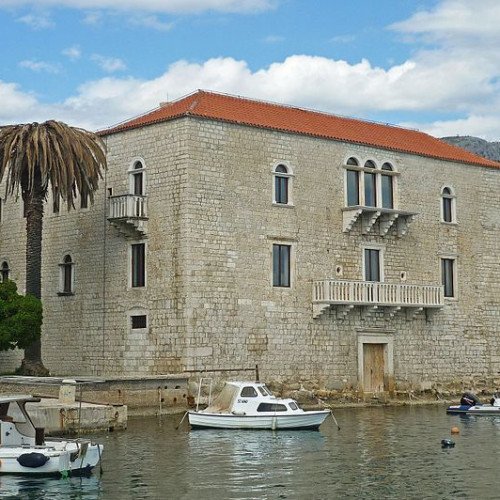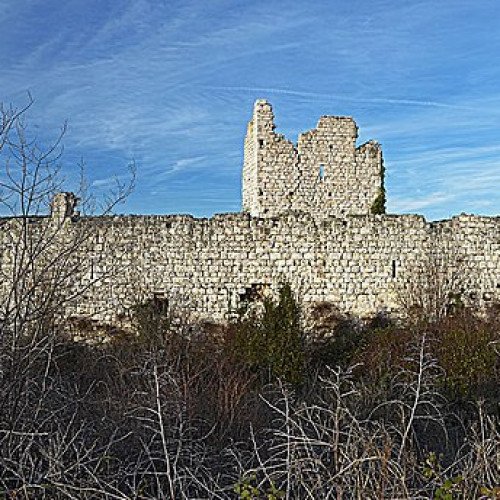Castles of "Croatia" VITTURI CASTLE vs VRANA CASTLE

VITTURI CASTLE
The Vitturi Castle is a 15th-century castle in Kaštel Lukšić, a town within the administrative area of Kaštela in Dalmatia, Croatia. Vitturi Castle was built by the aristocratic family Vitturi from Trogir, at the end of the 15th century. Two noblemen from Trogir, Nikola and Jerolim Vitturi, built the castle in order to provide protection not only for the Vitturi family but also for the population of the nearby village of Ostrog. The castle was built in the style of a luxurious renaissance palace and it was completed in 1564. It consisted of a residential building and two defence towers and it was connected to the mainland with a drawbridge. In the 18th century the drawbridge was replaced with a stone bridge. Near the castle there is a classicistic park dating from the second half of the 18th century. The park was also designed by the Vitturi family. In 1968 it was proclaimed a monument of park architecture. Nowadays, the renovated Vitturi castle has become the cultural centre of Kaštel Lukšić, as a place where numerous exhibitions, concerts and plays are held. In addition to that, the town museum and other cultural institutions are situated in the former residential part of the castle. The Vitturi castle is famous not only for its beauty but also for a legend concerning one of its inhabitants – Dobrila Vitturi.
Statistics for this Xoptio

VRANA CASTLE
Vrana (Croatian: Vrana, Latin: Aurana or Laurana Arauzona) is a historic settlement located north of the Vrana Lake, 6 kilometres (4 mi) from Pakoštane, a few kilometers from the Adriatic coast, in Zadar County, Dalmatia, Croatia. Today it is a small rural settlement. The significance of Vrana to the medieval Croatian history was closely connected with three religious communities: the Benedictines, the Knights Templar, and the Knights Hospitaller. The arrival of these three orders in Vrana and their cultural and political influence was conditioned by the medieval circumstances in Croatia and by the Roman Pope. Vrana had become one of the most important centers of political life, especially in the period from 1070. After the pope's deputies crowned him as the king of Croatia, King Zvonimir Dmitar in 1076 donated the city of Vrana and Benedictine monastery of St. Gregory, as a sign of loyalty to Pope Gregory VII. Vrana was the first permanent diplomatic headquarters of the pope's deputies in the entire Slavic region. Insignia of Croatian Kingdom were held within Vrana's walls for a long time. Consequently, Coloman of Hungary in 1102 came to the coronation in Biograd, as the nearest royal residence. In the 12th century, the church Priory of Vrana donated this property to Knights Templar. At that time, Vrana was fortified with walls and towers and a moat. There are assumptions that the present ruins of a fortified facility above the village were part of a fortified town with a church. After Knights Templars, Vrana was the property of the Knights Hospitallers from 1312.